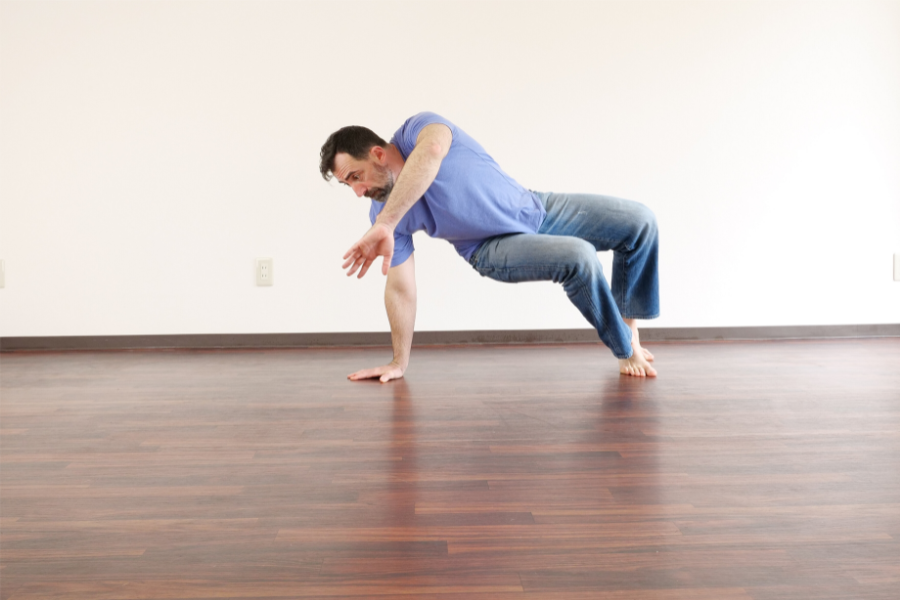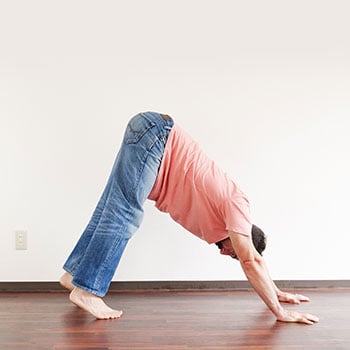Instant results are tempting. Shiny before-and-after photos, dramatic transformations, promises of a “new you” in six weeks. But there’s a question no one asks enough:
What happens after that?
Six months later? A year? Most people burn out, slip back into old habits, and end up looking for the next quick fix. Because sustaining 100% effort forever is impossible.
But what if you could feel better, move better, and make steady progress—without the crash? Tens of thousands of our clients have made it happen and you can do it too.
Let’s explore what that actually looks like!
💪 Appearance Vs Essence
🕰️ Beyond The Six Weeks
🔨 Breaking The Cycle
🏃 Gaining Momentum
😜 TL;DR – Just the Tips
Appearance vs Essence: What Do You Really Want?
 Most programs focus on how you look. Nothing wrong with that. But those are just surface-level goals. What if you focused on how you feel?
Most programs focus on how you look. Nothing wrong with that. But those are just surface-level goals. What if you focused on how you feel?
The real question is: What do you actually want from your training?
Do you want to feel stronger? Move without pain? Have energy to do what you love?
If your only measure of success involves how you look or how much you weigh, what happens when progress slows down?
That’s where meaningful goals come in.
Instead of obsessing over what’s on the outside, focus on how you move and feel inside your body.
- Bending down without pain.
- Playing with your kids without getting winded.
- Feeling capable, agile, and strong in everyday life.
These are the goals that actually stick—because they matter beyond the six-week mark.
Focusing only on external markers—pounds lost, inches shaved, weights lifted—can become a trap. Because progress isn’t linear. Some days you’ll feel great. Other days, nothing moves the way you want.
 British economist Charles Goodhart once said,
British economist Charles Goodhart once said,
“When a measure becomes a target, it ceases to be a good measure.”
This is the problem with such narrowly defined goals, people are inherently antsy and impatient. Especially so if the amount of effort doesn’t seem to be matching the results.
Finding Your True North: Personally Meaningful Goals Create True Changes
For goals that will genuinely enrich your life, it’s crucial to honestly introspect and consider what you really want when you think you “should lose weight” or “add some muscle”.
What does that really mean?
Think about what “moving better” means for your daily life and activities. Whether it’s bending down without a twinge of pain, playing with your kids without feeling winded, or simply going through your day with ease and agility, these are the goals that will transform your life far more profoundly than any number on a weight scale.
Physical discomforts like pain and stiffness don’t just affect you physically; they take a toll on our mental wellbeing. When you set goals aimed at improving how you feel and move, you’re also investing in your mental health. A life where your body feels more like a friend than an adversary and where stiffness and aches don’t dictate your choices.
Beyond The 30-Day Sprint: Create Lasting Change
 Short-term goals can get you started. But what happens after you hit them?
Short-term goals can get you started. But what happens after you hit them?
- If your goal was to lose 15 pounds—what’s next?
- If your goal was to bench press a certain weight—do you just keep adding more?
This is where a lot of people get stuck. The first few weeks of progress are always the fastest. But then it slows. So you chop the goal down—make it smaller, more achievable. And again. And again. Until it starts feeling like you’re not actually moving forward at all.
Taking smaller steps in the wrong direction doesn’t get you where you need to be. You need the right steps in the right direction.
That’s why long-term change isn’t about chasing endless goals. It’s about building a system that keeps you moving in the right direction. A way to train that fits into your life permanently.
There’s the well-meaning advice to “enjoy the process.” It sounds great on paper, but it takes a lot more than just saying it. Forcing yourself to enjoy the process is an oxymoron.
You need a starting point, a clear path that aligns with your overarching lifestyle and aspirations, or you risk never truly beginning. The absence of this long-term plan, this broader vision, is where many programs fail, leaving people in a cycle of uncertainty about how to maintain or advance their achievements.
Breaking The Cycle: Stop Starting Over

The fitness industry thrives on getting you to start over.
Six-week challenges. 90-day transformations. New year, new you. Sound familiar?
It’s the same cycle:
1️⃣ Follow a program.
2️⃣ See some progress.
3️⃣ Burn out.
4️⃣ Stop training.
5️⃣ Repeat with a “new” program next year.
The problem? Most programs aren’t built to last. They push intensity over sustainability, leaving you exhausted rather than equipped for long-term success.
If you’ve been in a loop of stops and starts, you don’t need another program. You need a different approach.
One that isn’t about chasing short-term goals, but about making training a natural part of your life—in a way that works for you at any age, at any level. It’s not that we should relegate ourselves to “brisk walks and light weights”, it’s not that at all.
It’s simply the reality that we can’t do the exact same things the exact same way as we did before. Programs are great, (we provide a lot of great ones!) but they work best when you’ve laid your foundation of your true motivations and mindset.
A Better Strategy: Building Momentum
I will bet you a dozen donuts that it wasn’t about the effort you’ve put in; it’s about the strategy you’ve employed. If you’re tired of the roller coaster, try this instead.
Here’s 4 concrete things you can do right now to set yourself up for success.
1. Honestly Figure Out What You Want

Ask yourself: Why am I doing this?
- If you wrote down “lose weight,” ask why five more times.
- Keep digging until you hit something that actually matters to you.
Most of the time, it’s not about looking a certain way. It’s about feeling better, stronger, more capable.
Find that real goal. That’s the one worth working toward. You’ll recognize it when you read your answer and go “Huh. Yeah that’s exactly it.”
Don’t rush this part, just this one thing could make a world of difference, it’s that important.
2. Make Today The Day

Momentum starts now.
Not next Monday. Not when you “feel ready.” Today.
- Do one thing for five minutes.
- A stretch, a squat, a push-up—whatever feels good.
- Don’t think about it. Just do it.
Tiny actions add up. A five-minute habit today becomes a foundation for tomorrow. The key is to initiate the process and create momentum. It’s not about the duration; it’s taking that crucial first step.
Forget about how difficult or how easy it is, just do something immediately. If you’ve already been doing a program, pick one exercise from it that you really enjoy. Think about how you’ll feel when you’re able to do it really well whenever you want
Momentum has a way of building upon itself. A five-minute walk today can lead to ten minutes in a couple days, and perhaps a light jog the next week. Inertia can keep us stagnant. Or it can keep us moving.
3. Do Less Than You Can

Sounds counterintuitive, but it works.
Most people burn out because they start too hard, too fast. Instead:
Do less than you think you can.
That way, you’ll actually want to keep going tomorrow. And the next day. And the next. Slow progress beats burnout every time.
Think of it as nurturing a plant; overwhelming it with water and sunlight all at once won’t make it grow any faster and might even hinder its growth. Over time, the time accumulates into significant progress. This is how lasting transformation takes root – not through a flurry of intense activity, but through a steady, nurturing progression.
4. Unwind And Reflect

After each session, ask yourself:
Did this help me get better at what I really want?
Not “did I burn X calories” or “did I suffer enough.”
Instead:
✅ Do I feel looser?
✅ Am I moving better?
✅ Is this helping me enjoy my life more?
If the answer is yes, you’re on the right path. If not, adjust. Training isn’t a punishment. It’s a tool to help you live better.
Are you getting closer to feeling better in your body? Are you improving in the activities you love or the daily tasks you want to excel in?
This practice of reflection also helps in fine-tuning your approach. If you find that your current method isn’t quite getting you where you want to be, it’s a sign to adjust your strategy. Maybe it means altering the intensity, switching up your routine, or even redefining some of your goals.
It all becomes a thoughtful, intentional pursuit. This the key to get past a temporary transformation and achieve real lasting change.
Burnout isn’t the price of success. You don’t need to push to your limit for six weeks, then crash. The real win is steady progress that fits your life, so you’re still moving well years down the road. Take the first step today. Then another tomorrow. Build momentum that lasts and it will last as long as you do.
TL;DR – How to Build Sustainable Progress That Sticks
🚀 Quick fixes don’t last.
Here’s how to make real, long-term progress:
1️⃣ Set the Right Goals
Instead of chasing aesthetics or short-term PRs, define success by how well you move, how strong you feel, and how training fits into your life.
→ Ask yourself: What do I actually want my body to do better?
2️⃣ Follow a Training System, Not Just a Workout Plan
Instead of grinding through random exercises, set up repeatable, scalable habits that support progress over years, not weeks.
→ Learn to add intensity intelligently.
3️⃣ Train in a Way That Fits Your Life
If a program is too rigid or extreme, it won’t last. Your training should adapt to your lifestyle, not the other way around.
→ The best workout is the one you’ll actually keep doing.
4️⃣ Progress Comes From Consistency, Not Intensity
Sustainable results don’t come from wrecking yourself with all-out effort every session. Small, repeatable improvements build real strength and mobility.
→ Consistency means learning to listen to your body
5️⃣ Pay Attention to What Your Body Tells You
Pain, stiffness, and burnout aren’t badges of honor. They’re signals. Learn to adjust your training instead of pushing through blindly.
→ Smart training means knowing when to go harder and when to recover.
📌 Bottom Line: Forget deadlines and fitness gimmicks. Focus on movement quality, sustainable habits, and training that actually serves your life. That’s how you build strength and capability that lasts.
Embrace Sustainable, Progressive Movement Improvement
Want a simple, proven way to build lasting strength, mobility, and control?
Elements helps you move better, feel stronger, and train smarter—without the burnout or BS. No quick fixes, just sustainable progress that sticks.
Start the Right Way For What You Really Need
- Clear, progressive instruction that meets you where you are
- Movements that feel natural because they are natural
- A system that works with your body’s innate learning process
- Practical applications that transfer to real life


